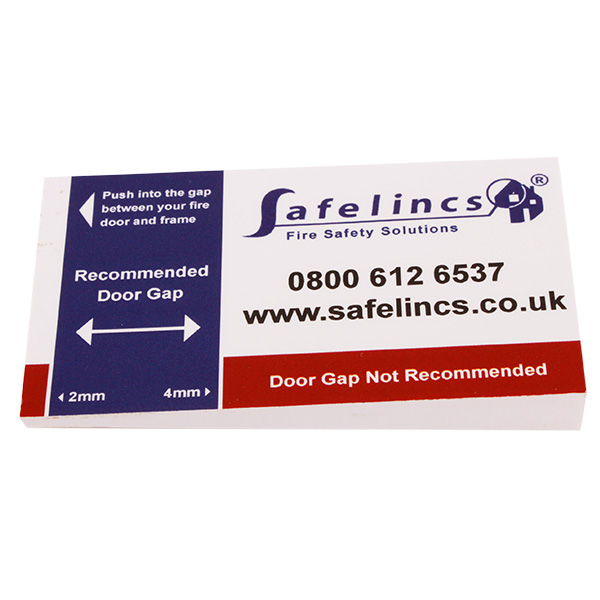-
Posts
623 -
Joined
-
Last visited
Everything posted by Safelincs
-
Hi Ranie To my knowledge, as long as you don't mix escape sign style within the building you are ok, at least until the dust from the various changes around escape signs has settled. Harry
-
Hi John They should ideally have done Modules 1 and 2 of a Fire Alarm course and have a knowledge of the system they are working with. At the very minimum they need to have been trained in how to change detectors on the system they have installed. The job can be done by a general maintenance person, if he/she is considered a site-responsible and competent person. The reason for having to know the system is that some systems, like addressable ones, need to be reset when things are changed; while others, mainly non addressable ones, can just be swapped over. If the company places one of their maintenance guys on the course mentioned above, they could do their own servicing inhouse. Harry
-
Hi Anita You can contact your local fire service (brigade). The brigades are tasked with policing adherence to the Regulatory Reform Order (specifies fire risk assessments). List of fire services Harry
-

Should I leave fire doors open over night?
Safelincs replied to a topic in Fire Doors and Accessories
Ideally, you should keep the fire doors closed at night. This increases your degree of protection and stops fire doors warping (if you have a door closer and door retainer at different heights). Harry -
Free-standing smoke detectors can be installed on walls (about a foot off the ceiling). However, it is best to check out the manual of the manufacturer first. The same applies to fire alarm detectors. If the glass roof is angled and forms a void, this advise might not apply as you have a large amount of 'dead space' which would delay the alarm being raised. Harry
-
Hi Is your front door leading to a communal area? Only then would you require a fire door, of course. Harry
-
hi Carl Maintained emergency lighting has the advantage that any failure of the lighting tube can be spotted immediately. Otherwise, only a emergency light test would reveal the fault. In addition, by using maintained exit signs, you inform visitors all the time about the exit locations (eg in a darkened cinema). Harry
- 14 replies
-
- maintained
- non-maintained
-
(and 1 more)
Tagged with:
-
Hi Hilary Fire exits can be bolted down when the buidling is not is use, as long as the bolts are removed reliably when the building is opened up. However, I would doubt that all keyholders in a scout group will remember to carry out this first step and you could put lives at risk if these bolts would remain shut. Have you considered proper push bars for your exits which include shot bolts? Harry
-
Hi Tracy sorry, cannot help re cupboard signs, however fire action signs fire safety log book Harry
-
Hi Terry I sent you an email directly, as i am not keen of publishing my email address. :) I am sure we can sort you out. Harry
-
Hi Terry If you send us an image of the damaged horn and the connection as well as the outer diameter of the connector, we can send you a replacement horn (if that helps). Harry
-
Hi, that sounds dodgy indeed. To satisfy BSI standards (and possibly your insurance) you should indeed have your extinguishers commissioned AT YOUR SITE. However, you can still order online. Safelincs, for example, offer extinguishers with an on-site commissioning service, see for example 2kg CO2 extinguishers which is a lot cheaper than what you pay at the moment. Harry
-

Does my front door need a lock without key?
Safelincs replied to a topic in Fire Doors and Accessories
hi Chris Are you a house owner, a tenant or a landlord? Harry -
Hi Roz Safelincs provides these fire door gap testers free of charge. Just email service@safelincs.co.uk Harry
-
Hi Bernard You would have to ensure that a) the chairs do not block the escape route B) the chairs cannot fall into the escape route c) that the chairs are not blocking access to anything relevant with regards to fire fighting/detection d) that the chairs are fire retardant and do not supply fuel to a fire Other thank that it is pretty much up to you how you use spaces. Harry
-
Hi Tom I guess the only alternative is to treat the doors as non existent and to carry out a fire risk assessment for each of the now insulated areas. Do they have primary and secondary escape routes and so on. Harry
-
Hi Jules I would expect to see emergency lighting if it is possible for staff or volunteers to work in the dark hours. If the opening times are only during daylight hours you can argue that no emergency light is required. If you might open in the dark hours, switch off all lights as a test and see if external street light is stil lighting up the rooms (borrowed lighting). If so, again, no emergency lights are needed in these areas. if you are left with dark rooms or areas, emergency lighting would usually be required. Harry
-

Do 2kg powder car fire extinguishers have to be serviced?
Safelincs replied to a topic in Fire Extinguishers
The RRO defines that “premises” include any workplace including vehicles. So all your cars and mobile farm machinery would require extinguishers. The HSE website also states that even if a vehicle is NOT carrying dangerous goods it must still have a minimum 2kg ABC extinguisher which should be “periodically inspected in accordance with the authorized national standard”. Cheers Harry -
Hi Caroline It's all about the British Standard and separating the signals between smoke alarms and CO alarms, because the message between the alarms is so different: a) in case of fire you close windows and leave B) in case of CO you open windows and leave. However, we offer some systems where this problem can be overcome in compliance with BS standards by using a locator switch. The Ei Electronics series of CO alarms do fully work together with the Ei smoke alarms, meaning they all go off at the same time (exactly as you would like it). However, to satisfy BSI they offer locator switches to identify the real source of the alarm (CO or a fire). Here a few system solutions (there are more, if you have any questions, please ask): 1) If you have a hard wired smoke alarm system with Ei140 smoke alarms: use locator Ei159 and the CO alarm Ei261ENRC 2) If you have a hard wired smoke alarm system with Ei160 smoke alarms: use locator Ei1529RC and the CO alarm Ei261 3) If you have a battery operated radio-interlinked system with Ei600RF smoke alarms: use locator Ei412 and CO alarm Ei208WRF 4) If you have a mains powered, radio-interlinked system based on Ei160 smoke alarms: use locator Ei412 and radio-frequency CO alarm Ei208WRF (6 year lithium battery) or Ei262 (mains powered) I hope this helps Harry
-
Hi Dan The reason is the relevant British Standard which requires a different alarm sound for CO alarms in comparison to smoke alarms. To achieve this, the CO alarm in question has a dual sound capability, meaning that - if a smoke alarm is triggered or tested, the CO alarm detects that a smoke alarm has gone off and will activate one of its two internal sounders (sounding like a smoke alarm). - if the CO alarm is tested or triggered, only the CO alarm sounds (sounding like a CO alarm). The smoke alarms are in this case not allowed to sound. As I said above, this is a stipulation from BSI I hope this answers your question Harry
-
Hi Chris Unless there are new risks you are introducing I cannot see the need for an additional fire door. One thing I would be concerned about is if the room behind the new partition has any other escape route and if the alarm system will protect people in that room if a fire breaks out in the newly partitioned section. Is there a fire detector in the room between warehouse and back room? Harry
-

What is the difference between water and water mist extinguishers?
Safelincs replied to a topic in Fire Extinguishers
Hi Tom I agree, normal water extinguishers should never be used on fat fires. However, the dry water mist extinguishers were designed as a solution for small fat fires and are F rated and certified. Watch the application of this including a F-class fire. The Dry water mist extinguishers also have passed the dielectrical test up to 35000 V, so can be used safely near electrical appliances of up to 1000 Volt at a 1m safety distance. Harry -

What is the difference between water and water mist extinguishers?
Safelincs replied to a topic in Fire Extinguishers
The fog created by the water mist is unable to conduct electricity (at typical business voltage anyway), as there is a distance between each microscopic droplet. In addition the mist does not form puddles that could conduct electricity. The best water mist fire extinguishers also use electrically non-conducting de-ionised water. Normal water droplets sink into hot fat and then erupt violently as they turn into steam, while water mist turns into steam ABOVE the hot fat, cooling the surface and dispelling oxygen from the surface. It should be noticed, though, that water mist should only be deployed on small fat fires. The price of the models mentioned is mainly based on the special nozzle and dip tube, which contains a rotating 'dispenser', which intersperses water particles with nitrogen gas. Harry -
There are also special requirements with regards to any flammable materials on escape routes. You should read also the LACoRS guide Harry
-
Hi Fred These units are slave luminaires or slave emergency lights and come with a choice of voltages, including 110V (AC or DC) Harry


